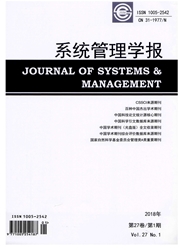

 中文摘要:
中文摘要:
建立了碳交易-碳税(环境税)并行政策下的两阶段供应链减排决策模型,研究了混合碳政策对供应链定价、产能、利润、减排率及最优的有偿配额比例、竞价底价、混合策略等的影响,并引入"优先采购协议"和"碳排放约束-收益共享契约"对供应链实施协调,得到既能降低供应链碳排放水平,又能增进供应链社会福利的Nash均衡减排模式。研究结果表明:(1)高强度的碳政策并不一定能有效激励企业减排,提高消费者对低碳产品认可度和碳市场活跃度才能推动供应链"良性"减排;(2)我国当前最优的有偿配额比例为3.4%,"有偿配额-减排补贴"的配套机制不仅能激发碳市场活跃度,而且其竞价成本效应和转移支付效应可对高污染落后产能发挥"逆淘汰"作用;(3)限价策略下的集中式决策能够实现减排效率的Pareto改进。最后,采用数值算例验证了模型的有效性。
 英文摘要:
英文摘要:
This paper built a two-echelon supply chain decision model based on the policy of carbon trading-carbon tax(Environmental taxes),in which we studied the effect of mixed carbon policies on the supply chain pricing,production capacity,profit,emission reduction rate and the optimal proportion of compensated quota,bidding price,as well as the mixed strategies.Then we introduced a protocol of priority in purchasing the low-carbon material and the contract of carbon emission restriction-benefit sharing to coordinate the supply chain,then we obtained the Nash-equilibrium mode of emission reduction that can not only reduce the level of carbon emission but also improve the supply chain's social welfare.The results show that:(1)High strength carbon policy is not necessarily an effective incentive for enterprises to reduce emission,while improving the consumer acceptance of low-carbon products and increasing the activity of carbon market could lead a supply chain benign emission reduction.(2)The optimal proportion of compensated quota for China is 3.4% under the model proposed in this paper.The supporting mechanism of compensated quota-cost subsidies can not only improve carbon market activity but also leave out the high pollution and out-date productivity by the effect of bidding cost and transfer payment.(3)The centralized decision mode can achieve Pareto-improvement of emission reduction efficiency with price-limit strategy.Finally,the numerical examples demonstrated the validity of the model.
 同期刊论文项目
同期刊论文项目
 同项目期刊论文
同项目期刊论文
 期刊信息
期刊信息
